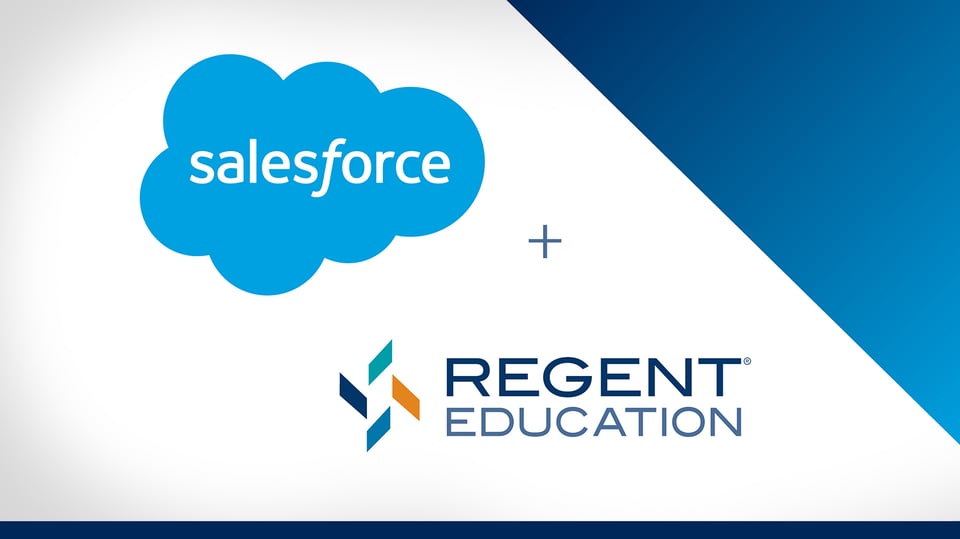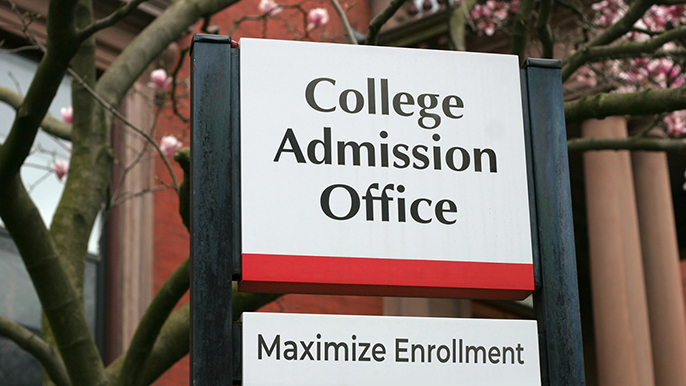College students today have high demands. As digital natives, they expect their experiences across campus to mimic what they’ve experienced their entire lives: personalized, connected, and easy to navigate.
But too often, students find themselves lost in a maze of disconnected systems and support structures, unable to find their way out. Many students, 69% to be exact, prefer to request help digitally or via self-service channels, but unfortunately, only 33% of students are aware of the support services available to them.
Adding to the challenges, institutions are facing recruiting, retention, and financial aid challenges unlike any they’ve experienced in the past.
Enrollment cliffWe’ve heard for years that the enrollment cliff is coming. But for many regions within the US, it’s here. Fall 2023 freshman class enrollment is down 3.6%, and that number is only going to get worse. In fact, over the next 10 years, 350,000 fewer students will graduate high school. In this environment of fewer students, increasing market share and reaching new audiences like adult learners becomes increasingly critical.
Decreasing confidence in higher edToday, confidence in higher education continues to fall, despite long-range data that supports higher lifetime wages for those who complete at least a baccalaureate degree. That’s why it’s imperative that colleges and universities demonstrate value in their educational programs.
Rising rates of unfunded tuition discountingInstitutional financial aid helps students offset the rising cost of college and aims to help increase enrollment and, in turn, tuition revenue. But when tuition discounting is unfunded, net tuition revenue remains flat, at best, counteracting the benefits of higher enrollment. To overcome this challenge, institutions need an integrated view of data across systems in order to analyze the impact institutional financial aid and tuition discounting has on overall net tuition revenue. Unfortunately, many institutions are unable to connect their systems in a way that provides the holistic view of data needed to assess the impact.
Completion challenges Over the past few years, completion rates have slowly improved. However, major equity gaps continue to persist. In order for colleges and universities to drive equitable outcomes, they must apply different strategic approaches to the ones they’ve used in the past.
Awareness gap
Colleges and universities have made significant investments in a myriad of services to help students succeed. And while over 85% of faculty and staff believe students are aware of these services, in reality, only 33% know they exist. Institutions must do a better job of raising awareness to the variety of services available to support students across recruiting, admissions, financial aid, retention, and completion.
Disjointed solutions A myriad of systems, solutions, spreadsheets, and data power institutions. But in many cases, they are disconnected, failing to provide a singular platform for seamless student support. Overcoming the disjointed hodgepodge of solutions that support recruiting, admissions, and financial aid is critical to delivering the support students need - and expect.
Financial aid flexibility, visibility, and complexityFinancial aid in the US is more complex than anywhere else in the world. And it’s becoming increasingly more challenging to navigate as student demands evolve. Today, students want flexibility in their academic programs, pursuing different enrollment models that afford them the ability to pursue their education on their terms. And they want increased visibility into their aid options so they can make the best borrowing decisions for their circumstances. Financial aid systems are struggling to keep, with many unable to support multiple enrollment models. Institutions need to explore solutions that deliver integrated financial aid management across all enrollment models and provide a holistic view of debt from first class through graduation.
Addressing these challenges is no small task. But there is one strategy that will dramatically improve an institution’s ability to overcome these obstacles and deliver the support students need to succeed.
According to Educause’s latest Top 10 IT Trends, integration of systems emerged as a top priority. And it’s no surprise. Most campuses today have disjointed solutions, spreadsheets, and data scattered across campus with no effective way to connect the dots and provide the seamless support students need.
Delivering a Unified View of Students with Salesforce & Regent Education. With everything, everywhere, all at once, it’s no wonder students struggle to succeed. That’s why Salesforce and Regent Education teamed up. Together, they provide a holistic view that connects the dots for students across a mishmash of systems and support services throughout the campus.
As the only financial aid solution available on the Salesforce AppExchange, Regent Education integrates with Salesforce Education Cloud to proactively deliver key financial aid insights to enrollment management and student success teams, directly within their CRM. As a result, they can better support - and exceed - enrollment and retention goals.
Together, Salesforce and Regent Education provide recruiters with critical financial aid information, including whether or not a FAFSA is present. Empowered with a clear picture of a student’s awarding status, recruiters can connect with top prospects, discuss next steps, and guide them towards admissions.
Student success advisors also benefit from critical insights such as students who have not yet applied for financial aid for the upcoming year or when a student’s financial aid is at-risk. These insights alert advisors so they can proactively intervene and get students back on track.
It’s clear that enrollment management teams are facing many headwinds when it comes to improving recruiting, admissions, and student success. Overcoming these obstacles requires institutions to take a different, more strategic approach that includes connecting systems and data to deliver the personalized, connected, easy-to-navigate experience students expect.
To learn more about how the integration between Salesforce and Regent Education helps colleges and universities improve recruiting, retention, and financial aid, please watch our on-demand webinar.




